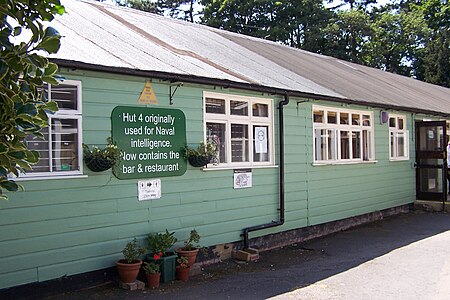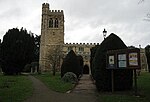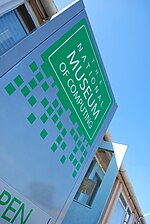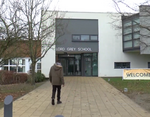Hut 4
Bletchley ParkBuildings and structures in Milton KeynesCryptography organizations

Hut 4 was a wartime section of the Government Code and Cypher School (GC&CS) at Bletchley Park tasked with the translation, interpretation and distribution of Kriegsmarine (German navy) messages deciphered by Hut 8. The messages were largely encrypted by Enigma machines. As the Kriegsmarine operated Enigma more securely, Hut 8 had less information for Ultra than Hut 6 which handled Army and Air Force messages. Hut 4 also broke various hand cyphers and some Italian naval traffic.
Excerpt from the Wikipedia article Hut 4 (License: CC BY-SA 3.0, Authors, Images).Hut 4
Sherwood Drive, Milton Keynes Old Bletchley
Geographical coordinates (GPS) Address Nearby Places Show on map
Geographical coordinates (GPS)
| Latitude | Longitude |
|---|---|
| N 51.99633 ° | E -0.74287 ° |
Address
Hut 4 Cafe
Sherwood Drive
MK3 6EB Milton Keynes, Old Bletchley
England, United Kingdom
Open on Google Maps









